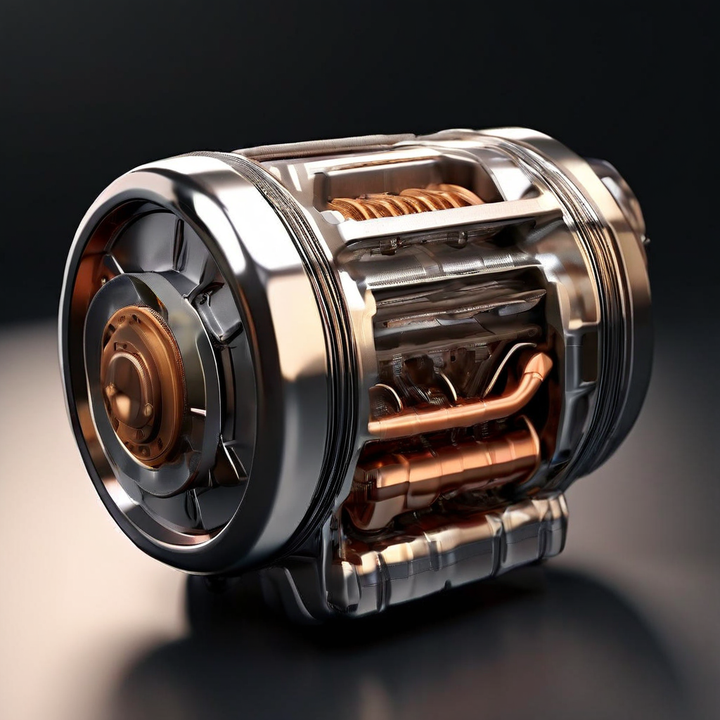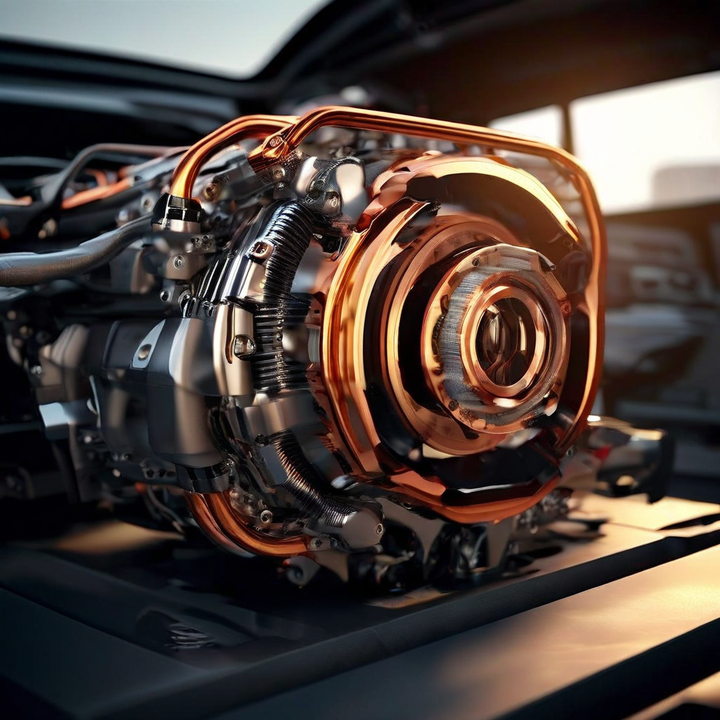


The diagnostic trouble code (DTC) P03AD indicates an issue with the cylinder 3 pressure sensor circuit on the vehicle's engine. This sensor monitors the combustion pressure inside cylinder 3 and sends the data to the engine control module (ECM). The "intermittent/erratic" part of the code means the ECM is detecting an inconsistent or erratic signal from the sensor circuit.
The P03AD code is part of the On-Board Diagnostics (OBD) system, which monitors various components and systems within your vehicle's engine. Specifically, this code indicates an issue with the cylinder 3 pressure sensor circuit, which is responsible for monitoring the combustion pressure within that particular cylinder.
| Component | Function |
|---|---|
| Cylinder 3 Pressure Sensor | Monitors combustion pressure in cylinder 3 |
| Engine Control Module (ECM) / Powertrain Control Module (PCM) | Receives and interprets pressure sensor data to optimize engine performance |
The pressure sensor plays a crucial role in the engine's operation, as it provides real-time data to the ECM or PCM. This data is used to optimize fuel delivery, ignition timing, and other critical parameters for efficient and clean combustion. When the pressure sensor circuit is intermittent or erratic, it can lead to various issues, including:
Misfires
Decreased fuel efficiency
Potential engine damage if left unaddressed
Over the years, I've encountered several common culprits that can trigger the P03AD code. Let's dive into the main causes:
One of the most frequent causes of this code is wiring-related problems. The pressure sensor is connected to the ECM/PCM via a wiring harness, and any damage, corrosion, or loose connections within this harness can lead to intermittent or erratic signals being sent to the control module.
Common wiring issues:
Chafed or pinched wiring harness
Short circuits or open circuits
Poor electrical connections
Corrosion at sensor or harness connectors
Another common cause is a defective or contaminated pressure sensor itself. These sensors are designed to withstand extreme temperatures and pressures within the combustion chamber, but over time, they can become fouled with soot or debris, leading to inaccurate readings.
Pressure sensor issues:
Soot or debris contamination
Age-related failure
Manufacturing defects
While less common, it's also possible that the issue lies within the ECM or PCM itself. These control modules are responsible for interpreting the signals from the pressure sensor and making adjustments to the engine's operation accordingly. If there's a problem with the ECM/PCM's software or hardware, it may misinterpret the signals from the pressure sensor, resulting in the P03AD code being set.
Potential ECM/PCM problems:
Software glitches
Hardware failures
Compatibility issues
As a mechanic, diagnosing the root cause of the P03AD code requires a systematic approach. Here are the steps I typically follow:
The first step is always a thorough visual inspection of the wiring harness and connectors associated with the cylinder 3 pressure sensor. I look for any signs of damage, such as:
Chafed or burnt wires
Loose connections
Corrosion
This visual inspection can often provide valuable clues as to the source of the issue.
Next, I'll connect a diagnostic scan tool to the vehicle's OBD port and check for any additional codes that may be present. Sometimes, the P03AD code can be accompanied by other codes related to:
Wiring faults
Compression issues
ECM/PCM problems
These additional codes can help narrow down the root cause of the issue.
One of the most valuable diagnostic tools at my disposal is the ability to monitor live data from the pressure sensor while the engine is running. Using a scan tool, I can compare the readings from the cylinder 3 pressure sensor to those of the other cylinders.
| Cylinder | Pressure Reading |
|---|---|
| 1 | XX psi |
| 2 | XX psi |
| 3 | XX psi (potentially erratic or deviating) |
| 4 | XX psi |
Any significant deviations or erratic behavior in the cylinder 3 pressure sensor readings can indicate a faulty sensor or wiring issue.
If the visual inspection and live data readings don't provide a clear answer, I'll move on to more in-depth testing. This includes:
Checking the resistance of the pressure sensor itself to ensure it's within the manufacturer's specifications.
Verifying that the sensor is receiving the correct voltage supply and ground from the ECM/PCM by testing the circuits at the sensor connector.
Once the root cause has been identified, it's time to move on to the repair phase. Here are the typical steps involved:
If the issue is traced back to wiring problems, the damaged or corroded wiring and connectors will need to be repaired or replaced. This can involve:
Splicing in new wiring sections
Replacing the entire harness
Cleaning and re-securing connectors
Proper wiring repair or replacement is crucial to ensure reliable signal transmission and prevent future issues.
In cases where the pressure sensor itself is found to be defective or contaminated, it will need to be replaced with a new one. This process requires carefully following the manufacturer's instructions for:
Proper sensor installation
Sealing to ensure accurate readings
Preventing any leaks
While less common, if the issue is traced back to the ECM/PCM, it may require reprogramming or, in some cases, complete replacement. This is typically a more involved and costly repair, but it's sometimes necessary to resolve the issue and restore proper engine operation.
As with any automotive issue, prevention is always better than cure. Here are some tips to help avoid or minimize the likelihood of encountering the P03AD code:
Following the manufacturer's recommended service intervals for your vehicle is crucial. This includes:
Regular engine oil and filter changes
Air filter replacements
Other scheduled maintenance tasks
Proper air filtration can help prevent soot and debris from contaminating the pressure sensor and other engine components.
Excessive idling or high RPM operation can contribute to soot buildup within the engine, potentially leading to pressure sensor contamination over time. Adopting proper driving habits, such as:
Avoiding excessive idling
Following severe service schedules if required
These practices can help extend the life of your vehicle's components.
Using high-quality fuel and fluids recommended by the manufacturer can also play a role in preventing issues like the P03AD code. Inferior fuel or oil can contribute to increased soot formation and contamination, potentially leading to sensor failures or wiring issues down the line.
The cost of resolving the P03AD code can vary significantly depending on the root cause and the make and model of your vehicle. Here's a rough estimate of what you might expect:
| Repair | Estimated Cost Range |
|---|---|
| Wiring repair | $100 - $300 for parts and labor |
| Pressure sensor replacement | $150 - $400 for the sensor and labor |
| ECM/PCM reprogramming or replacement | $400 - $1200 or more, depending on the vehicle |
It's important to note that these are just rough estimates, and the actual cost may vary based on your specific situation and the labor rates in your area. Additionally, it's always recommended to have a professional mechanic diagnose and repair the issue to ensure proper operation and avoid potential further damage to your vehicle.
The P03AD code may seem daunting at first, but with the right knowledge and approach, it's a problem that can be effectively diagnosed and resolved. As a mechanic, I've seen my fair share of these issues, and I can attest to the importance of following a systematic diagnostic process and addressing the root cause promptly.
Whether it's a wiring issue, a faulty pressure sensor, or an ECM/PCM problem, the key is to approach each case with patience, attention to detail, and a willingness to explore all potential causes. By doing so, you can not only resolve the P03AD code but also gain valuable insights into the inner workings of your vehicle's engine management system.
Remember, prevention is always better than cure, so be sure to follow the recommended maintenance schedules, adopt proper driving habits, and use quality fuel and fluids. By taking these proactive measures, you can help minimize the likelihood of encountering issues like the P03AD code and keep your vehicle running smoothly for years to come.
The P03AD code indicates that the cylinder 3 pressure sensor circuit is intermittent or erratic. This means the sensor is not providing consistent or accurate data to the engine control module.
The most common causes are wiring issues like damaged or corroded wiring, a faulty pressure sensor itself, or an internal problem with the engine control module.
Start with a visual inspection of the wiring harness, check for other related codes, monitor live sensor data, and perform resistance and voltage tests on the pressure sensor circuit.
Yes, a defective or contaminated cylinder 3 pressure sensor can cause the P03AD code to be set by the engine control module.
Typical repairs involve repairing or replacing damaged wiring, replacing the faulty pressure sensor, or in some cases, reprogramming or replacing the engine control module.
Yes, the P03AD code can potentially lead to misfires, decreased fuel efficiency, lack of power, or other drivability issues if left unresolved.
Regular maintenance, proper driving habits, using quality fuel and fluids, and avoiding excessive idling or high RPM operation can help prevent soot buildup and sensor contamination.
While not an immediate emergency, the P03AD code should be addressed promptly to avoid potential engine damage or further drivability issues.
Yes, the cost can range from a few hundred dollars for wiring or sensor repairs to over $1,000 for an engine control module replacement, depending on the root cause and vehicle make/model.
It is generally recommended to have a professional mechanic diagnose and repair the P03AD code to ensure proper operation of the engine management system and avoid further damage.

Miguel started tinkering with car radios as a teenager, fascinated by the intricate dance of wires and circuits. This passion led him to pursue a career as an automotive electrician. For the past 10 years, Miguel has tackled everything from flickering headlights to mysterious electrical gremlins. He thrives on troubleshooting electrical problems and enjoys sharing his knowledge to empower car owners to understand their vehicles better.



